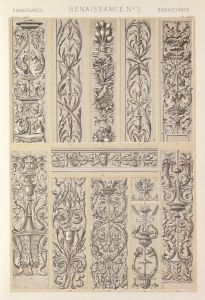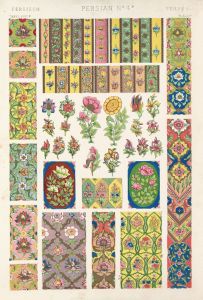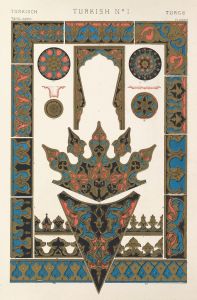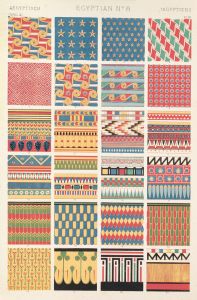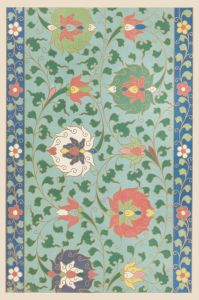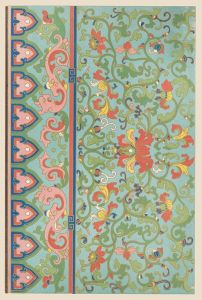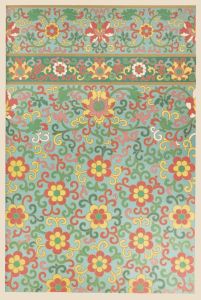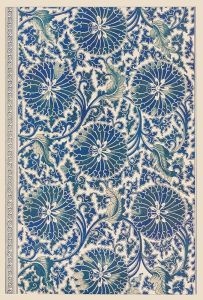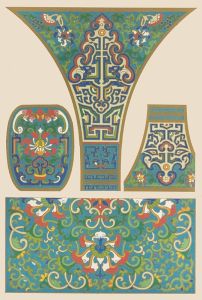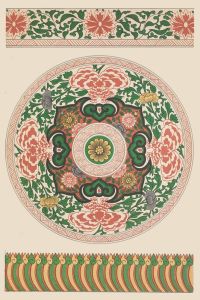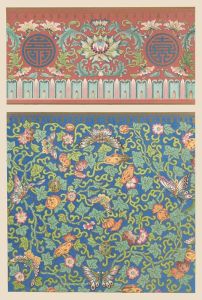
Examples of Chinese ornament, Pl.80
A hand-painted replica of Owen Jones’s masterpiece Examples of Chinese ornament, Pl.80, meticulously crafted by professional artists to capture the true essence of the original. Each piece is created with museum-quality canvas and rare mineral pigments, carefully painted by experienced artists with delicate brushstrokes and rich, layered colors to perfectly recreate the texture of the original artwork. Unlike machine-printed reproductions, this hand-painted version brings the painting to life, infused with the artist’s emotions and skill in every stroke. Whether for personal collection or home decoration, it instantly elevates the artistic atmosphere of any space.
"Examples of Chinese Ornament, Pl.80" is a plate from the influential design book The Grammar of Ornament by Owen Jones, first published in 1856. Owen Jones (1809–1874) was a British architect and designer known for his contributions to the study and application of decorative arts. His work aimed to document and analyze ornamental styles from various cultures, providing inspiration for designers and artists during the 19th century.
The Grammar of Ornament is a comprehensive collection of decorative patterns and motifs from different historical periods and regions, including Egyptian, Greek, Roman, Persian, Indian, Chinese, and others. The book is notable for its use of chromolithography, a printing technique that allowed for the reproduction of vibrant, detailed, and colorful designs. It became a seminal reference for the Victorian design movement and remains an important resource for the study of historical ornamentation.
Plate 80 specifically focuses on Chinese ornamentation, showcasing decorative patterns and motifs characteristic of traditional Chinese art and design. The designs in this plate reflect the aesthetic principles of symmetry, balance, and harmony, which are central to Chinese decorative arts. The motifs often include stylized natural elements such as flowers, leaves, and clouds, as well as geometric patterns and symbolic imagery. These elements are rendered with precision and vibrant colors, reflecting the sophistication of Chinese craftsmanship.
Jones's depiction of Chinese ornamentation was based on his study of artifacts, textiles, ceramics, and other decorative objects that were accessible in Europe during the 19th century. His work aimed to highlight the beauty and ingenuity of Chinese design, emphasizing its relevance and value in the broader context of global decorative arts. However, it is important to note that Jones's interpretations were influenced by the perspectives and limitations of his time, and his representations may not fully encompass the diversity and complexity of Chinese ornamentation.
The inclusion of Chinese ornament in The Grammar of Ornament reflects the growing interest in Asian art and design during the 19th century, a period marked by increased cultural exchange and trade between Europe and Asia. This interest was part of a broader fascination with exoticism and non-Western artistic traditions, which influenced European art, architecture, and design.
Today, "Examples of Chinese Ornament, Pl.80" serves as both a historical document and a source of inspiration, illustrating the enduring appeal and significance of Chinese decorative art in the global history of design.





